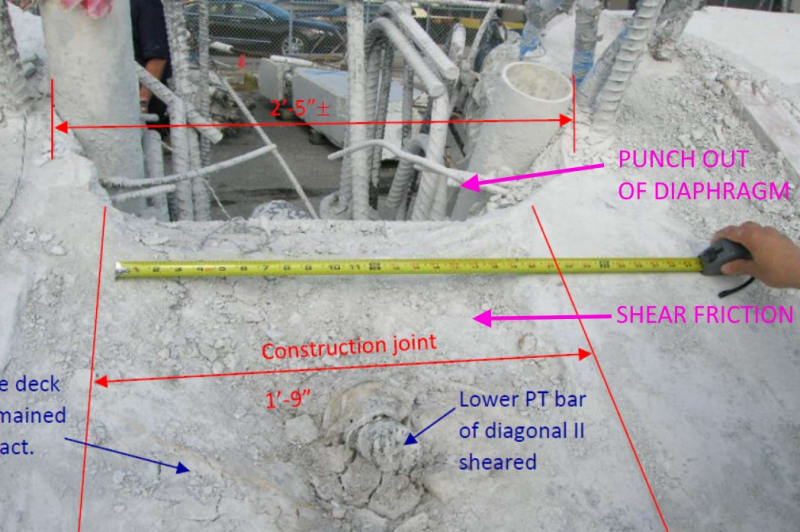A continuation of our discussion of this failure. Best to read the other threads first to avoid rehashing things already discussed.
Part I
thread815-436595: Miami Pedestrian Bridge, Part I
Part II
thread815-436699: Miami Pedestrian Bridge, Part II
Part III
thread815-436802: Miami Pedestrian Bridge, Part III
Part IV
thread815-436924: Miami Pedestrian Bridge, Part IV
Part V
thread815-437029: Miami Pedestrian Bridge, Part V
Part VI
thread815-438451: Miami Pedestrian Bridge, Part VI
Part VII
thread815-438966: Miami Pedestrian Bridge, Part VII
Part VIII
thread815-440072: Miami Pedestrian Bridge, Part VIII
Part IX
thread815-451175: Miami Pedestrian Bridge, Part IX
Part X
thread815-454618: Miami Pedestrian Bridge, Part X
Part XI
thread815-454998: Miami Pedestrian Bridge, Part XI
Check out Eng-Tips Forum's Policies here:
FAQ731-376: Eng-Tips.com Forum Policies
Part I
thread815-436595: Miami Pedestrian Bridge, Part I
Part II
thread815-436699: Miami Pedestrian Bridge, Part II
Part III
thread815-436802: Miami Pedestrian Bridge, Part III
Part IV
thread815-436924: Miami Pedestrian Bridge, Part IV
Part V
thread815-437029: Miami Pedestrian Bridge, Part V
Part VI
thread815-438451: Miami Pedestrian Bridge, Part VI
Part VII
thread815-438966: Miami Pedestrian Bridge, Part VII
Part VIII
thread815-440072: Miami Pedestrian Bridge, Part VIII
Part IX
thread815-451175: Miami Pedestrian Bridge, Part IX
Part X
thread815-454618: Miami Pedestrian Bridge, Part X
Part XI
thread815-454998: Miami Pedestrian Bridge, Part XI
Check out Eng-Tips Forum's Policies here:
FAQ731-376: Eng-Tips.com Forum Policies

![[bigsmile] [bigsmile] [bigsmile]](/data/assets/smilies/bigsmile.gif)
